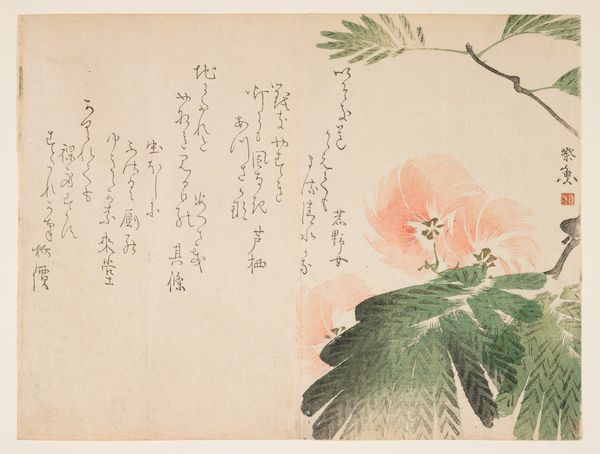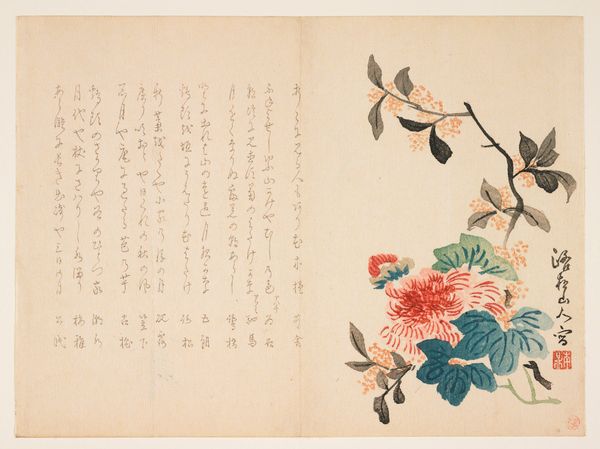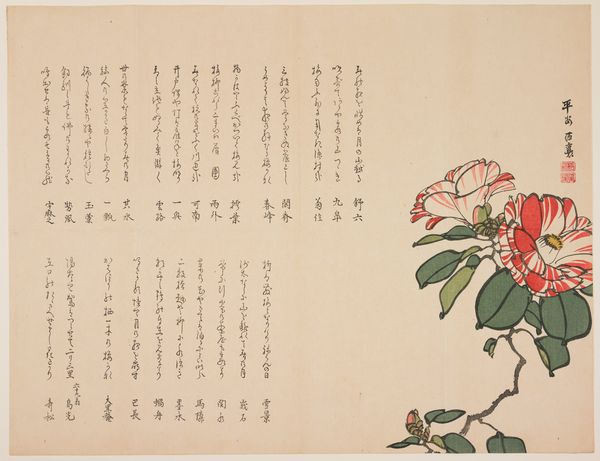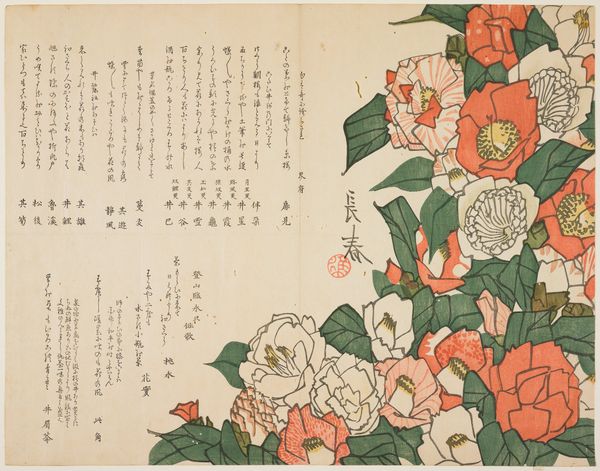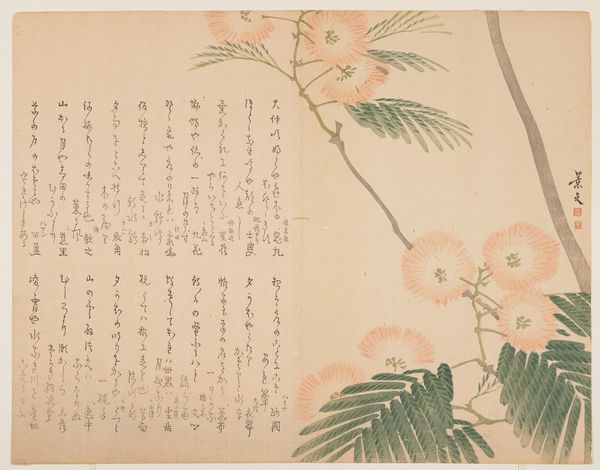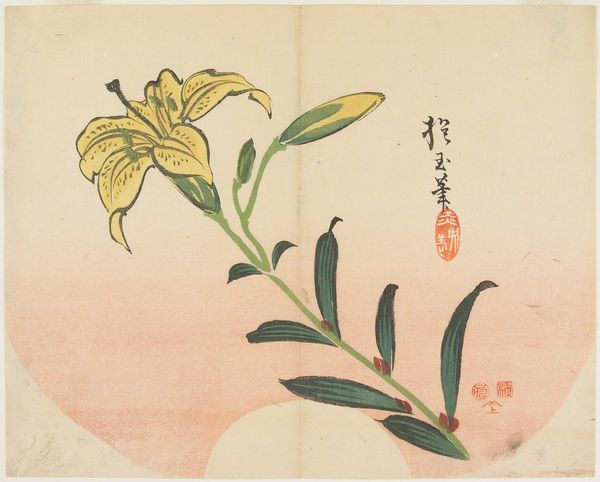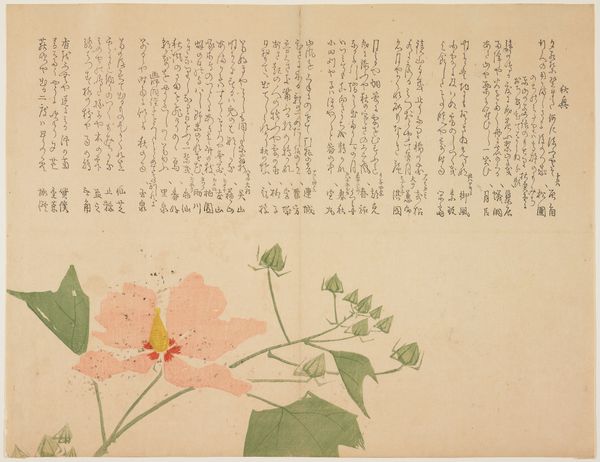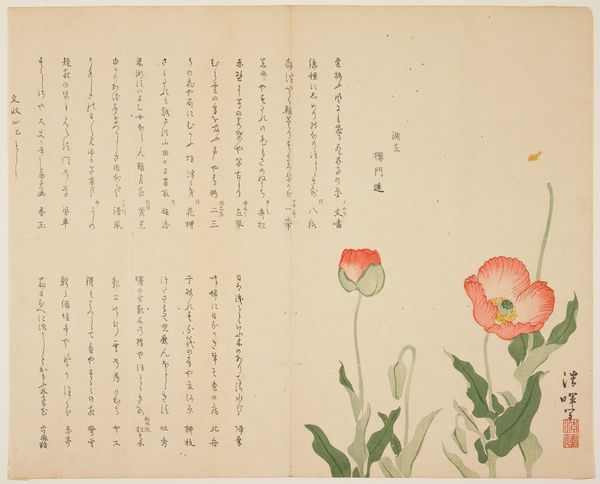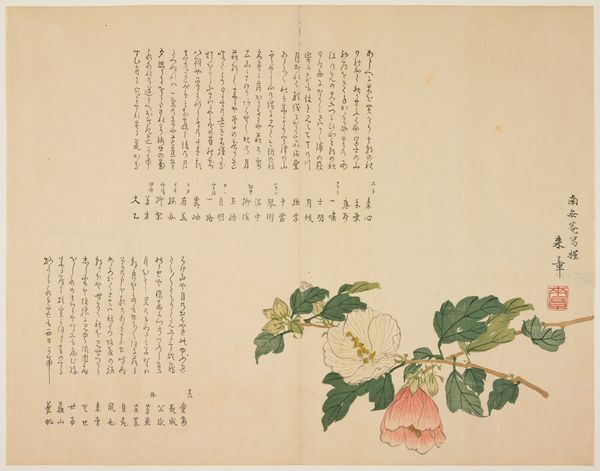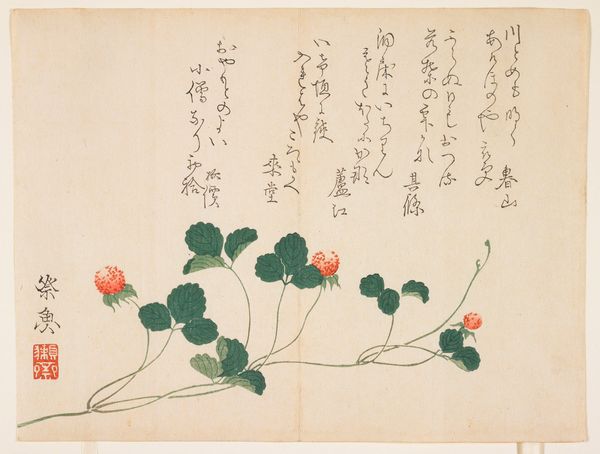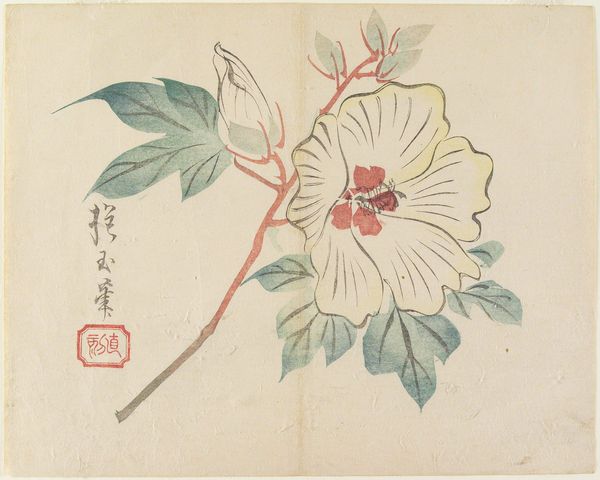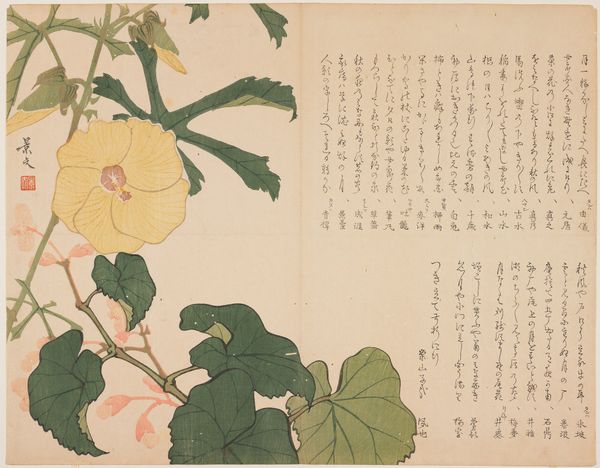
print, paper, ink, woodblock-print
#
water colours
# print
#
asian-art
#
ukiyo-e
#
culinary art
#
paper
#
ink
#
woodblock-print
#
botanical drawing
Dimensions: 7 1/4 x 9 3/4 in. (18.4 x 24.8 cm) (image, sheet)
Copyright: Public Domain
Curator: Standing before us is “(Tiger lily),” a woodblock print made with ink and colors on paper, created circa 1861-1864. It resides here at the Minneapolis Institute of Art. What’s your initial read? Editor: Well, immediately I’m struck by how delicate, how deceptively simple, it feels. There’s a quiet elegance that resonates. It evokes, for me, a certain sense of transience. Curator: Indeed. The lines themselves, observe their economy. The curve of the stem, the precise angles of the leaves, all rendered with such essentialism. Note, too, how the textual elements inscribe themselves into the larger pictorial field, offering contrast against organic representation with calculated distribution of dark vs. light visual components, foreground and background. Editor: Absolutely. The inclusion of text is, itself, a compelling element. Is it poetry, perhaps commenting on the nature of beauty or the fleeting nature of life, typical in ukiyo-e? Tiger Lilies in general symbolize pride and confidence, maybe referencing a person or situation rather than just mere botany. Curator: A fine hypothesis. Let's consider the composition; notice how the bloom is cropped, falling to the upper left, creating dynamic asymmetry, avoiding static or conventionally proportional representation. That placement redirects focus onto the calligraphic inscription which then carries your sight down along a descending stem with precisely rendered leaves to a painter's signature in red on the bottom left side to re-anchor our focus once more! Editor: The tiger lily, particularly as a repeating artistic motif, often connects back to historical periods. Royal power. Aristocratic fashion. Consider the visual lexicon that a contemporary viewer would instantly understand when this was released—the implications behind that symbol in comparison with today's viewer! Curator: Indeed, the artwork acts almost as a cipher for broader cultural phenomena. Editor: Exactly. Art acts as cultural shorthand. Even its execution evokes the larger aesthetic and philosophic themes within Japan's ukiyo-e movement. It has certainly been enlightening revisiting familiar themes with a refined structural approach. Curator: Yes. Considering both the surface elements and potential socio-cultural significations enhances engagement with this print on a completely different intellectual register!
Comments
minneapolisinstituteofart almost 2 years ago
⋮
Originally imported from China, tiger lilies grow wild throughout Japan. Their large orange flowers bloom in profusion in early summer. The artist Shumpo here depicts a fully bloomed flower and a tightly closed bud on a long stem with lush green leaves. His design thus shows the lily as if in its natural environment, and effectively evokes the viewer's memories of summer in Japan's fields and mountains.
Join the conversation
Join millions of artists and users on Artera today and experience the ultimate creative platform.
